Troubling Treatment: Efforts are underway to reform teen behavioral programs
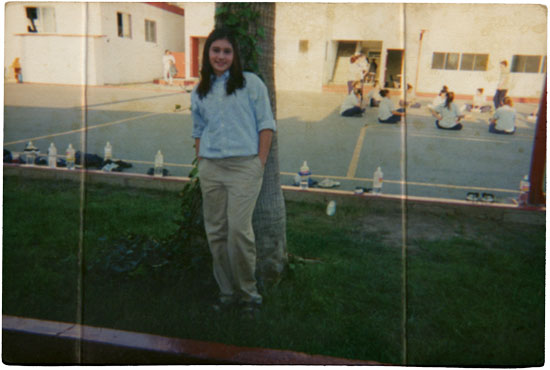
Chelsea Filer was 15 when her mother hired men to take her from her home in San Diego to a teen treatment center in Ensenada, Mexico. Photo courtesy of Chelsea Filer.
Chelsea Filer grew up in San Diego, the daughter of a single mother who worked late nights at an advertising agency.
Filer was diagnosed with attention deficit hyperactivity disorder as a child, and without much supervision as a teenager, she stopped doing her homework and started hanging out with her older boyfriend. She often fought with her mother, who Filer says didn’t have the time to help her get back on track.
At age 15, Filer tried to run away and live with her grandparents. A couple of weeks later, two large men, who worked with a transport company hired by her mother, woke her up in the middle of the night. They told her she was leaving home “the easy way or the hard way.” They wouldn’t let her change her clothes or bring anything with her.
The men took her across the border to Casa by the Sea, a private residential school and treatment center in Ensenada, Mexico, that mostly enrolled American youths with behavioral problems. At that time, in early 2001, it was operated by the World Wide Association of Specialty Programs and Schools—a now-defunct group of teenage behavior modification programs, boot camps and therapeutic boarding schools that was based in Utah.
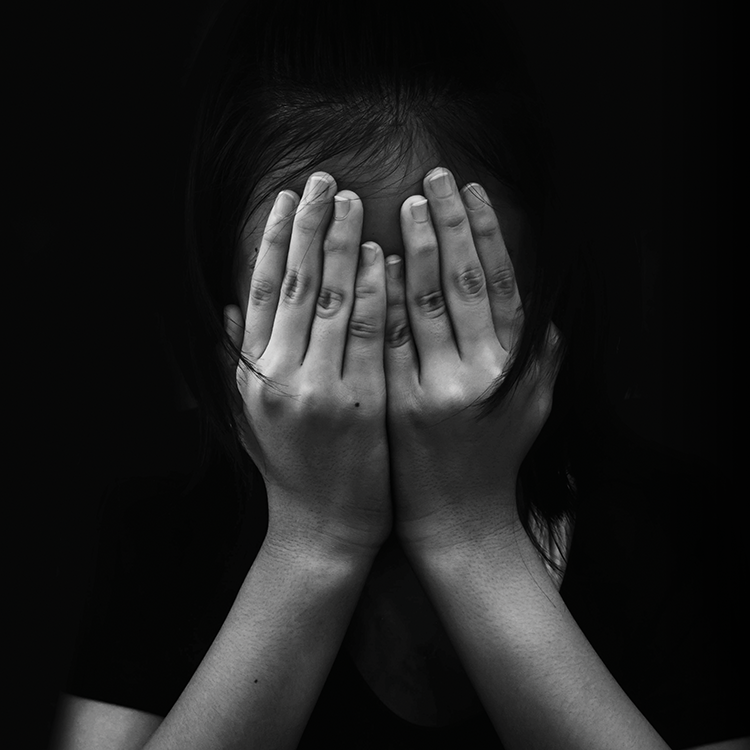
Image from Shutterstock.
Filer remembers that upon her arrival, staff members strip-searched her, gave her a sweatsuit and held her for at least a week in a “restriction room,” where male staff several times her size restrained her whenever she moved, cried or made noises. Once she joined the other girls in the program, she learned about “consequences,” or demerits, which were given to anyone who broke the rules.
Staff gave her consequences for not asking for permission before speaking, getting distracted during class and looking at the ocean. Because the center prohibited passing notes, she also received consequences for accidentally taking pens into the bathroom.
Once she racked up 10 consequences—or even when any staff member decided one rule violation was bad enough—Filer went to “worksheets,” a type of detention where staff forced her to stare at a wall and listen to cassette tapes of Moby Dick and The Old Man and the Sea for up to eight hours at a time.
After about six months, her mother agreed to her transfer to High Impact, a nearby boot camp also operated by WWASP.
During her two-month stay at the desert-based facility, the staff made her clean the bathroom with her own toothbrush as part of her chores and walk laps on the outdoor track to win points toward graduation. When she rebelled or told staff they were abusive, they not only restrained Filer as a form of punishment but also locked her in a dog cage and starved, beat and burned her.
Filer returned to Casa by the Sea, where she remained until her grandmother called her case manager in 2003 and questioned her treatment in the program. Shortly after that, Filer says, the school’s administration recommended she be discharged.
“When children are legally kidnapped and trafficked across state or border lines, they lose their rights and any protections from the jurisdiction of their home state,” says Filer, who is now a youth rights advocate in Sacramento, California.

Chelsea Filer at Casa by the Sea. Photo courtesy of Chelsea Filer.
“By the time I was ready to face what happened to me in Mexico, I looked down every avenue for justice, but there was nothing that I could do about my case. There was, however, something that could be done for the girls currently held within that facility.”
Filer reported her experiences to the FBI, and in 2004, Mexican officials shut down Casa by the Sea after a surprise inspection. They already had shut down High Impact.
Looking at the industry
Allegations of abuse and mistreatment aren’t unique to WWASP-affiliated programs. In June 2020, three staff members at a residential treatment facility for youths ages 12 to 18 in Michigan were charged with involuntary manslaughter after they restrained a 16-year-old boy who had thrown part of a sandwich at another student. He went into cardiac arrest and died two days later.
The facility, which was owned by for-profit company Sequel Youth & Family Services, since has closed.
In January, six children who ranged in age from 8 to 17 between 2003 and 2019 filed a federal class action lawsuit against Devereux Advanced Behavioral Health. They alleged that the nonprofit organization, which treats children with intellectual disabilities, mental disorders and trauma at campuses in nine states, did not protect them from sexual, physical and verbal abuse.
And in February, the Salt Lake Tribune reported on public documents showing staff at Provo Canyon School in Utah had pinned a 14-year-old girl from Oregon’s foster care system nearly 30 times and injected her with Haldol—an antipsychotic medicine often used to treat schizophrenia—17 times in a three-month period in 2018 and 2019. The school is owned by for-profit company Universal Health Services.
Sequel said in a written statement that its facilities are heavily regulated by state and industry organizations, and it takes “any allegation of abuse or negligence seriously.” Sequel said it reports any claims to appropriate authorities and complies with their investigations and also conducts its own internal investigations. “We grieve anytime children in our care are exposed to harm,” Sequel said, adding that when one of its facilities closes, it increases the likelihood of harm to displaced youth.
Devereaux and Provo Canyon School did not respond to ABA Journal requests for comment.

Shutterstock.
The “troubled teen” industry, as the network of therapeutic boarding schools, residential treatment centers, religious academies, wilderness programs and drug rehabilitation centers is known, dates back at least 50 years. Operated by private companies, nonprofits and faith-based groups, these facilities promise to help youth with problems related to behavior, addiction and eating disorders, and in some cases sexual orientation and gender identity. They intend to provide a less-restrictive alternative to incarceration or hospitalization and typically let youths take classes on-site to continue their education.
Parents can pay to place their teenagers in programs. State and local governments also can pay programs to take youths who don’t have anywhere else to go from their foster care and juvenile justice systems. An investigation published by American Public Media Reports in September found that Alabama, California, Florida and Iowa each paid Sequel more than $15 million to house children in fiscal year 2016.
Although a number of people say these programs helped to positively change their lives, critics of the industry argue that no federal oversight or consistent regulations among states put vulnerable children at greater risk. For example, a program that is licensed as a therapeutic boarding school in one state may be licensed as a residential treatment center in another state.
In addition, many states exempt religious boarding schools from licensing requirements entirely, in addition to not requiring any oversight by education or child welfare authorities.
Because programs exist in a murky area of the law, it has been difficult to track and curtail abuses that have occurred over the years. Past attempts by Congress to regulate the industry were unsuccessful because lawmakers were reluctant to get involved in state matters. Only recently have states such as California, Oregon and Utah taken the lead in tightening licensing and monitoring standards.
Early efforts
Philip Elberg is one of the first attorneys who spoke out about potential harms in the troubled teen industry.
Now retired from Medvin & Elberg, his Newark, New Jersey firm, he began representing families in lawsuits resulting from the misdiagnosis and maltreatment of teenagers in residential treatment centers in the 1990s.
In one of his first cases, Elberg represented Rebecca Ehrlich, who claimed staff members at KIDS of North Jersey strip-searched her and held her captive in 1987. Ehrlich, who was 14 and a high school freshman when she was placed in the Hackensack facility by her parents because of behavioral issues, was diagnosed with bipolar disorder after she left in 1993. She sued its former director, accusing him of medical malpractice, among other violations. She alleged that the unqualified staff failed to recognize or assist with her mental illness, and in 2000, Ehrlich won a $4.5 million settlement.
Elberg represented other former patients of KIDS of North Jersey who heard about the lawsuit, and he recovered about $16 million for them.
“In these cases, I said, ‘What were the conditions of these kids when they went in? Were they properly diagnosed, and was the treatment they received consistent with the standard of care for those conditions?’” he says. “And I was able to show it wasn’t. That was the theory in which I litigated the cases, purely as malpractice cases. All the time they spent confined to these places became part of their damages, because they didn’t belong there in the first place.”
Elberg realized during his research that the New Jersey program, which closed in 1998, was only part of a nationwide problem.
He worked with the U.S. Government Accountability Office as it launched an investigation into widespread allegations of abuse and death at residential treatment programs. In October 2007, U.S. Rep. George Miller, a Democrat from California who was chair of the House Education and Labor Committee, held the first in a series of congressional hearings to discuss its results.
According to its initial findings, the GAO identified thousands of allegations that had been reported to the U.S. Department of Health and Human Services and to state agencies, detailed in pending civil and criminal cases and posted on the internet between 1990 and 2007. As one example, the National Child Abuse and Neglect Data System found that 33 states reported 1,619 staff members were involved in incidents of abuse in residential treatment programs in 2005 alone.
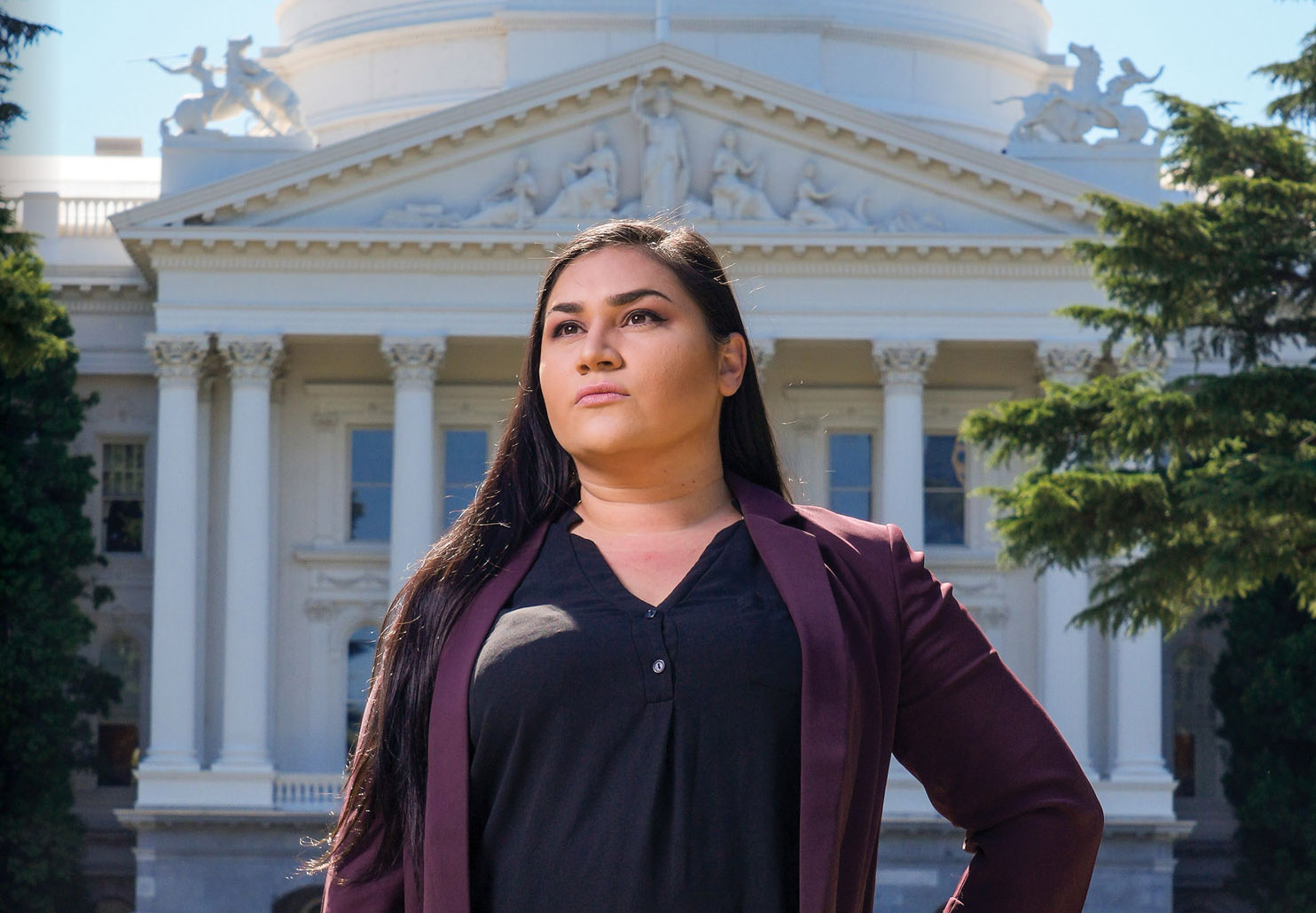
Chelsea Filer, a youth rights advocate in Sacramento, California, helped draft changes to her state’s Community Care Facilities Act, aimed at reforming the troubled teen industry. Photo by Tony Avelar/ABA Journal.
In also examining 10 cases where teenagers died while in a private program, the GAO found “significant evidence of ineffective management” that “compounded the negative consequences of (and sometimes directly resulted in) the hiring of untrained staff; a lack of adequate nourishment; and reckless or negligent operating practices.”
Miller introduced the Stop Child Abuse in Residential Programs for Teens Act of 2008 to require health and safety standards and enforcement provisions to prevent child abuse and neglect in residential treatment centers. It was passed by the House in two separate sessions, but the bill stopped in the Senate.
Elberg was not only disappointed by the failure to reform the industry, but also that he and other attorneys haven’t been able to represent more former patients and students in their cases.
He contends that many were unable to fully understand their injuries before the statutes of limitations expired in their states. Other challenges arose with lawsuits brought by a person living in one state against a program operating in another state.
“I used to tell people, ‘I can’t help you, but if you find a lawyer in a state that has jurisdiction, I will talk to them and can try to help them,’” Elberg says.
Spreading the word
Public awareness of problems in the troubled teen industry has grown in recent years, due largely to a grassroots social media movement.
As part of her advocacy work, Filer founded WWASP Survivors, an organization run by alumni of the WWASP-affiliated programs. They launched the #breakingcodesilence campaign in 2014 to encourage more people to share their stories.
“I realized that I could use my story and my voice to speak for the kids still held in silence, abandoned, abused and afraid,” says Filer, who estimates that there are more than 120,000 children each year in troubled teen programs.
Their campaign received an unexpected boost in September when reality TV star Paris Hilton revealed in her documentary, This Is Paris, that she was sent to residential treatment centers for behavioral problems as a teenager. She recalls that at Provo Canyon School, staff members forced her to take off her clothes and sit in solitary confinement for hours after she refused to take pills they prescribed to her.
“I was just freezing, I was starving, I was alone, I was scared,” Hilton says in the documentary. “I was at Provo for 11 months, and the only thing that saved my sanity was thinking about what I wanted to do and who I wanted to become when I got out of there.”
Provo Canyon School said in a statement posted on its website a few days after the release of Hilton’s documentary that it works with “extremely complex individuals who often present a danger to themselves and others.”
“Provo Canyon School is committed to the safety of our patients and staff,” according to its statement. “Provo Canyon School DOES NOT use ‘solitary confinement’ as a form of intervention.”
Hilton began promoting #breakingcodesilence and was accepted to Rise Justice Labs, an accelerator designed to help activists draft civil rights laws. In January, she joined Filer and other advocates who discussed their experiences in an ABA webinar—the first in a series—about the troubled teen industry.
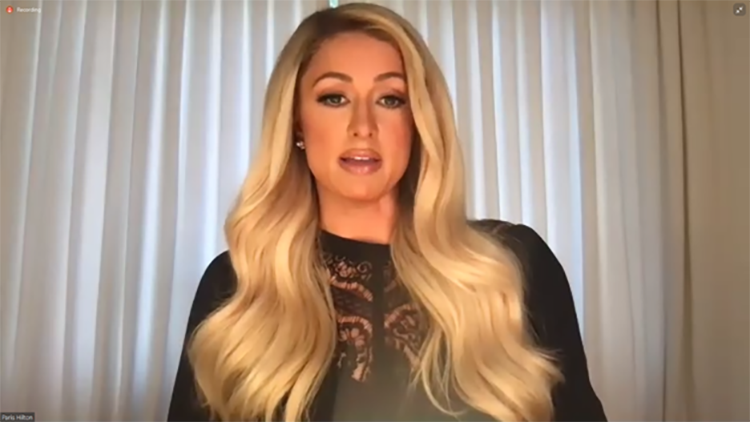
Paris Hilton spoke about her experiences in residential treatment centers during an ABA webinar in January. Photo by Amanda Robert.
Amira Hasenbush helped organize the series after receiving a call from a woman who was concerned about her nephew. His dad and stepmom planned to send him to Agape Boarding School, a Christian program in Missouri for teenage boys struggling with academic and behavior issues that has faced abuse allegations for decades.
Hasenbush—a family formation attorney who focuses on LGBT and alternative families in Los Angeles and is the Section of Family Law liaison to the Commission on Sexual Orientation and Gender Identity—says the woman told her that her nephew was gay, and based on what she read about the school online, she worried he would be bullied and tortured. She wanted emergency guardianship to keep him out of the program.
“It opened my eyes to this,” says Hasenbush, who enlisted the help of another local attorney and the San Francisco-based National Center for Lesbian Rights. “Even though we did successfully get this one kid out of the program, it was the first time I realized these programs exist.”
Agape Boarding School did not respond to ABA Journal requests for comment.
Hasenbush and longtime friend Michal Rogson, who serves as the Section of Litigation liaison to SOGI, helped create the Troubled Teen Working Group and plan panel discussions around the myriad legal issues intertwined with the industry. Upcoming programs will focus on impact litigation, mental health reform and whistleblower protections.
In addition to spreading awareness, Hasenbush says they hope more ABA members get involved.
“We need lawyers from every section and every state to think about this creatively and help the advocates pass the legislation, to put together class action lawsuits, to give legal advice to a parent who might be fighting a custody battle where the other parent has full custody and is trying to send their kid to one of these schools,” she says.
Seeing the benefits
From Megan Stokes’ perspective, significant improvements have been made in the troubled teen industry.
As recently as the 1990s, she says, some programs didn’t employ licensed clinicians and relied on coaches to provide youth services. But in 1999, the National Association of Therapeutic Schools and Programs was created to not only serve as a resource for these programs but also to advocate for proper care of youth in treatment.
“You can’t just call yourself a therapeutic boarding school,” says Stokes, the executive director of NATSAP, the industry’s largest nonprofit trade association. “We require that our adolescent programs, in addition to having a licensed clinician, have to be licensed by their state or accredited by a national accrediting body like the Joint Commission. There has to be some oversight.”
NATSAP recently announced it would require additional oversight. As of June 30, 2023, NATSAP’s more than 160 member programs must all be accredited by a national behavioral health accrediting agency.
“State licensing is so drastically different,” Stokes says. “I wanted there to be a single standard, where if it’s a Joint Commission program in Illinois, that’s going to have the same standards around patient safety as a Joint Commission program in Florida.”
NATSAP also aims to demonstrate that its programs are effective. According to a study of 74 of its members in 2020, about 85% of relatives or guardians of youth who started treatment saw significant improvement in their adolescent that was still present 12 months after admission.
Former students such as Justin Levine point to other ways residential treatment centers improved their lives.
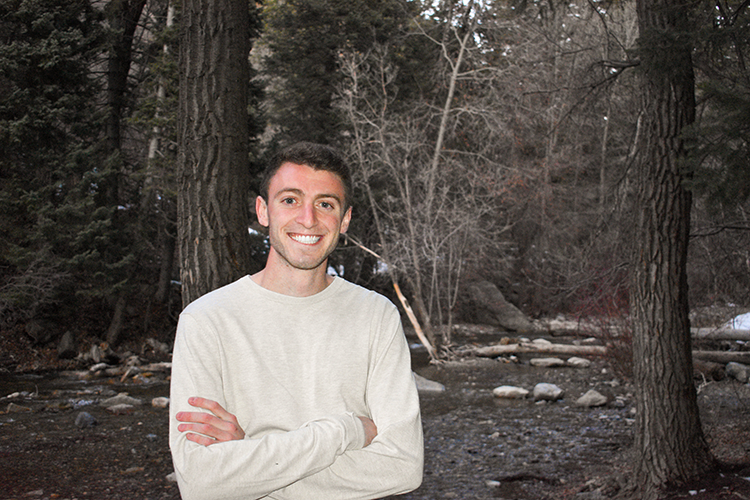
While enrolled at Telos in Orem, Utha, Justin Levine appreciated its focus on triathlon training. He returned to Telos after college to work as a neurofitness instructor. Photo courtesy of Justin Levine.
The Boca Raton, Florida, native says he suffered from severe anxiety and struggled to meet his parents’ expectations in high school. After he stopped getting straight A’s and started getting into trouble, he spent two months in a wilderness therapy program in North Carolina and then went to Telos Academy in Orem, Utah, where he began his junior year.
Levine admits that he initially resisted therapy, but he eventually grew to appreciate its focus on triathlon training. In the advanced level of the program, he often ran seven miles, biked 20 miles or swam one mile before school. He also ran on the track and cross-country teams and played baseball, basketball and soccer.
“Growing up, I never really had an outlet, and I was definitely headed down the wrong path,” he says. “I didn’t want to really work on anything, but Telos stayed with me. They knew the person I was deep down, and they kept giving me opportunities.”
After graduating from Telos in 2016, Levine went to Bates College in Lewiston, Maine. He ran track and cross-country for four years, majored in neuroscience and returned to Telos, where he now works as a neurofitness instructor and researcher.
He says he never experienced or witnessed abuse at Telos during or after his time in the program. In fact, he adds, the school’s founders made it their goal to ensure the harmful practices that happen in other institutions don’t happen at Telos.
Pushing reforms
A couple of years ago, Democratic Oregon state Sen. Sara Gelser learned her state was sending foster care kids to residential treatment centers across the country. She led an inquiry into their living conditions, which resulted in Oregon removing its youth from all out-of-state facilities in 2020.
“At first, I thought it had to do with our lack of access to a full array of mental health services for kids in Oregon,” she says. “I assumed we were sending kids to high-quality, very specialized short-term treatment facilities. And then I learned that’s not what it was.”
In June 2020, Gelser helped pass legislation that mandates if Oregon places a child in an out-of-state facility, it needs to be licensed as a child-caring agency with the state’s Department of Human Services and comply with the same regulations as a facility actually located in Oregon.
Among other requirements, out-of-state programs are prohibited from using chemical restraints and required to report child abuse involving Oregon children. They must also notify DHS if another state determines a child abuse allegation is founded.
“Most states are sending bunches of kids to other states for placement, and once they’re gone, those kids have no protection anymore,” says Gelser, who along with Elberg has participated in two ABA webinars. “The state they get to, they don’t think they’re responsible for them, and the state that sends them assumes the licensing and abuse entities in the other states are on top of it. But they’re not.”
Gelser has also worked with Republican Utah state Sen. Michael McKell, a personal injury lawyer who has served as a catalyst for change in the Beehive State—home to nearly 100 youth residential treatment centers.
Utah’s law, signed by Gov. Spencer Cox in March, prohibits a congregate care program from using “a cruel, severe, unusual or unnecessary practice on a child,” which includes repeated physical exercises and withholding personal interaction. In addition, the Utah Office of Licensing is also now required to conduct quarterly site inspections and will receive funding to hire more employees to meet that goal.
“More than anything, there is a lack of funding within our regulatory body,” McKell says. “It’s a large industry, a nearly half-a-billion-dollar industry in the state of Utah, with very, very little oversight. Thankfully, that’s what I would’ve said prior to this legislative session.”

Shutterstock.
Gelser and McKell both say the next step is federal legislation. Democratic U.S. Rep. Adam Schiff of California introduced bills in 2015 and 2017 that were modeled on Miller’s prior legislation, but they never moved out of committee.
After working with advocates who experienced abuse, Gelser realized that it upends their lives forever and then moves on to the next generation of kids.
“It’s a public health problem, and it’s a public policy problem,” she says. “I see this as a rights issue, a mental health issue, a consumer protection issue and a taxpayer accountability issue.”
This story was originally published in the August/September 2021 issue of the ABA Journal under the headline: “Troubling Treatment: Efforts are underway to reform teen behavioral programs.”



